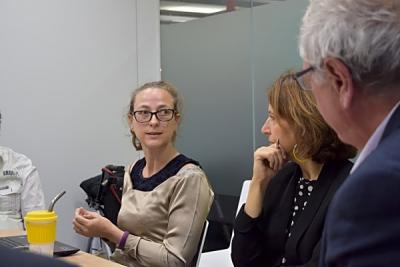GUEST BLOG: Improving the energy market for disabled people
- Guest blog
- Publication type:
- Blog
- Publication date:
- Industry sector:
- Supply and Retail Market
As the weather gets colder, many of us will be turning up the heating.
However, in addition to energy costs that we all face, many disabled people are forced to pay more, simply because of their impairment or condition.
Take Sarah Jane for instance, who has a visual impairment, arthritis, as well as a history of epilepsy and brain disorders. She needs plenty of light and gets cold easily – “I’d say my energy bills are doubled because of my impairment, as I need to keep warm. It has a huge effect on your life.”
If we want an energy market that works for all consumers, then it is important that steps are taken to drive down the extra costs disabled people face in the energy market.
Disabled people’s experiences of the energy market
In research we carried out, a third of disabled adults say that their impairment or condition has a significant impact on their energy costs. We hear from disabled people with limited mobility or multiple sclerosis who say they have to use more heating to stay warm. Other disabled people who use items of assistive technology say they need to use extra electricity to charge these items.
Energy – along with other goods and services like specialised equipment, transport and insurance – is an area where disabled people often face additional costs due to their impairment or condition. Our analysis shows that these costs add up to an average of £570 a month.
Whilst the average UK household spends £1,214 a year on energy, over a quarter of households with a disabled person spend more than £1,500 a year on their energy. This equates to a staggering 4.1 million households. Of these, 790,000 households spend over £2,500 a year on their energy.
Tackling the challenges faced by disabled energy consumers
We were pleased this year to see the introduction of the Domestic Gas and Electricity (Tariff Cap) Act 2018, which introduces an energy price cap on standard variable and default tariffs.
However, whilst this is a start, this measure will only go so far in reducing high energy costs for disabled people. A longer-term approach is needed to improve how the energy market functions for disabled people, involving the regulator, the Government, energy suppliers and charities.
Below are three ways in which to help tackle the additional costs disabled people face for energy:
Supporting disabled people to get a good deal
As with all consumers, disabled people need adequate information when navigating market and selecting an energy supplier. However disabled people tell us that they also want to know specific information, e.g. whether an energy supplier offers a good service to disabled customers, whether they offer support with energy bills.
Supporting disabled people to access this information would enable individuals to make more informed choices when selecting an energy supplier.
Improve support for disabled people in the energy market
There are a range of schemes to support customers with their energy bills. One of these schemes is the Warm Home Discount – which provides a one-off discount of £140 on the energy bills for certain customers. Whilst this is primarily aimed at people on out-of-work benefits, this may not always capture disabled people not in receipt of these benefits but who face high costs for their energy.
Therefore, there is a need to review the core eligibility for the Warm Home Discount to ensure it is targeted effectively at disabled people who face additional costs for their energy.
Making better use of data to support disabled people
Whilst the Government plans to amend the Digital Economy Act to make data sharing easier between the DWP and energy suppliers, energy suppliers have a role as well in identifying their disabled customers.
We often talk about “vulnerable” consumers in the energy industry. However, our research shows that over half of disabled adults (53 per cent) do not think of themselves in this way.
This means there is a need for energy suppliers to think about how they gather information about the needs of their customers to ensure they are successfully targeting support at those who need it, including disabled people.
Ofgem’s visit to Scope
We were pleased to have a number of senior members of staff from Ofgem visit Scope this week.
Martin Cave, right and Mary Starks, right middle, visit Scope in November 2018.
As well as hearing about Scope’s work on energy, Ofgem staff also heard directly from disabled people and their families about their experiences in the energy market.
We’re pleased that Ofgem is currently reviewing its Consumer Vulnerability Strategy. We’ve been engaging with Ofgem as part of this process, and we look forward to continuing to work with the regulator to tackle the financial penalty many disabled people face for their energy.
Our series of guest blogs represent the views of the authors writing with a view to encouraging debate about important energy topics. They do not represent the views of Ofgem, nor should they be construed as an endorsement or commitment by Ofgem to take any particular course of action.
Read more about Ofgem's work on vulnerability.
See our FAQs on energy price caps. You may also wish to check out the #EnergyPriceCap hashtag on Twitter.
Subscribe
You can stay up to date with our blogs and other Ofgem news by signing up to our Alerts & Briefings.


